The Adelaide medical team on a mercy mission to East Timor
For many of the world’s poorest people, an Adelaide mercy mission to East Timor is a godsend — and for the volunteers, their only reward is changing the world ... one life at a time.

SA News
Don't miss out on the headlines from SA News. Followed categories will be added to My News.
What do you say to a subsistence farmer who has walked his family four hours to catch a bus for a day-long trip he can’t afford to seek life-changing surgery for his three kids struggling with facial disfigurements – but the waiting room is full and surgery list already overflowing?
If you are Adelaide clinicians in East Timor you say “Welcome, we’re here to help.”
In a low-key, no-frills mercy mission earlier this month an Adelaide surgical team returned to East Timor yet again for a week of intense work repairing faces and changing lives.
Word went out including on TV that the team would be in Dili at the National Guido Valadares Hospital – and people who generally don’t earn actual money found cash for bus trips from the bush, carrying hope as well as disfigured children.
On the first Saturday about 60 patients were seen and assessed as families filed in patiently, hopefully, to the hospital.
Some were burns victims, some with other issues, most were kids with cleft palates and cleft lips.
The subsistence farmer arrived with his kids late in the afternoon. How do you say “Sorry, we’re full?”
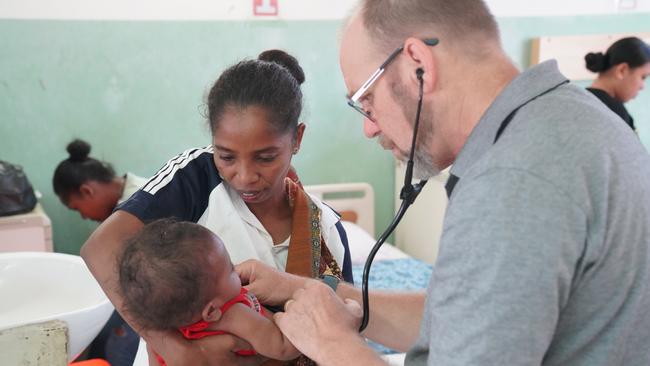
Cleft palates and lips are relatively easy and cheap to repair.
But if you are on a subsistence farm, not having the treatment done early in life can mean trouble eating, talking and breathing, trouble at school and working, and later in life being ostracised as “different” – not to mention the loss of self-confidence as a happy kid becomes a troubled teen.
Adelaide’s volunteer life-changers do the surgery in their own time, at negligible cost, and have been doing it for decades.
In a clue to their selfless culture they are quick to credit an earlier pioneer as the man on whose shoulders they stand.
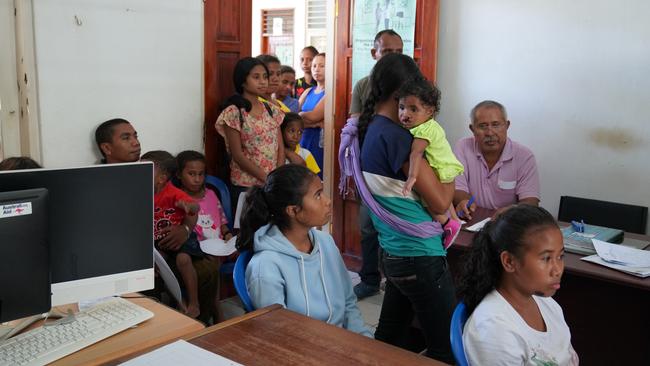
Leprosy physician Dr John Hargrave who worked in Aboriginal communities from his Darwin base started going to East Timor in the 1990s when it was part of Indonesia, building trust and relationships in a tricky part of the world.
Dr Mark Moore from Adelaide lucked in to Dr Hargrave’s last visit in 1999, and has been returning there regularly as well as to West Timor and Flores in Indonesia.
Which brings us to this trip.
Craniofacial surgeon Dr Moore had been going to East Timor several times a year for the past 20 years, though he has eased back recently with responsibilities including becoming head of the Australian Craniofacial Unit based at Adelaide’s Women’s and Children’s Hospital.
The latest trip was under the auspices of OSSAA – the Overseas Specialist Surgical Association of Australia, an Unley-based charity whose work has helped see more than 5000 lifesaving or life-changing operations in East Timor and Indonesia.
The tax-deductible charity was originally based in Darwin but as most clinicians were coming from Adelaide it relocated in 2002.
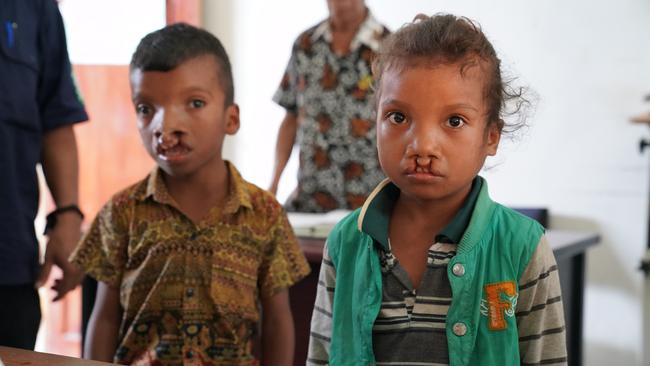
Dr Moore was joined by plastic and reconstructive surgical resident Dr Zameer Gill, on his second trip to East Timor, anaesthetist Dr Brian Spain from Darwin, nurse Joy Booth, anaesthetic recovery nurse Sandy Grixti, and speech pathologist Lai Celina.
The weeklong trip cost about $12,000 for airfares, accommodation and meals, but for those it helped it was clearly priceless.
In the two decades he has been going to East Timor, some 40 trips plus about another 10 by colleagues without him, Dr Moore’s team has repaired 1064 cleft palates and lips.
That’s a lot of individuals whose lives were changed in a way hard to imagine.
This past trip they operated on about eight people per day for the week for a total of 41 surgeries including 27 clefts after eventually assessing 78 patients.
These includes the subsistence farmer’s three kids with cleft palates and lips who arrived late on the initial day of assessments, with little more than big smiles and hope.
Of the 78 patients seen, one with multiple severe problems may have to come to Adelaide for surgery but the emphasis is on treating patients in their homeland as it is low cost and less socially disruptive.
Very importantly, the Australian team also continued to train local clinicians including Dr Joao Ximenes.
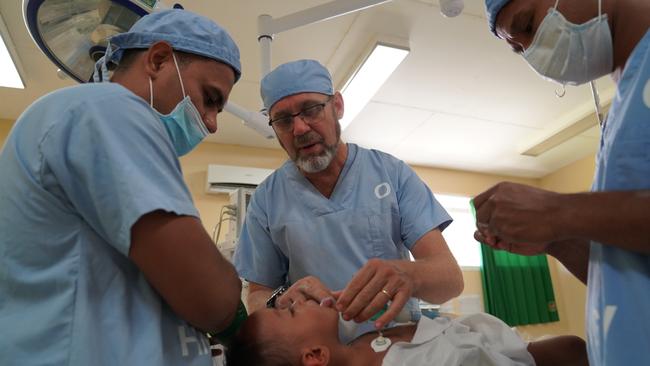
This dedicated young doctor, on a salary of about $700 a month, has now performed some 160 cleft surgeries and in turn is training his own team.
“The end point is you want to train someone so you are no longer necessary,” Dr Moore said.
While for the Australian team a painful part of the process is assessing people and deciding who gets priority and surgery in the window of a week, the work training people like Dr Ximenes means those left further down the list are not abandoned.
“We go for a week because that is probably the most productive period — it is not too disruptive for local staff and doesn’t tire everyone out too much,” Dr Moore said.
“The hardest part is deciding who we do and who we leave to our local counterparts. People come in from a long way to be seen, we had 60 people to see on the first Saturday.
“If these kids are not done they don’t go to school, don’t get educated, are socially ostracised – but if you repair them early they do go to school and contribute to society.
“As kids they look you in the eye but when they are older and become self-conscious they don’t — there is a huge lack of self-confidence.”
Prior to flying in, a local counterpart ensures word gets out that the team will be in town and consulting on a specific day. This is crucial in a nation where farming to survive may take priority.
“That’s part of the pressure on us with the decision making,” Dr Moore said.
“I don’t want to send them away because they have spent money they don’t really have to come to see us, and you can’t say ‘come back in six months’ because they may not get the message next time.
“We take it for granted we can go to the Women’s and Children’s Hospital but this is the reality for them, just effectively an hour’s flight out of Darwin.”
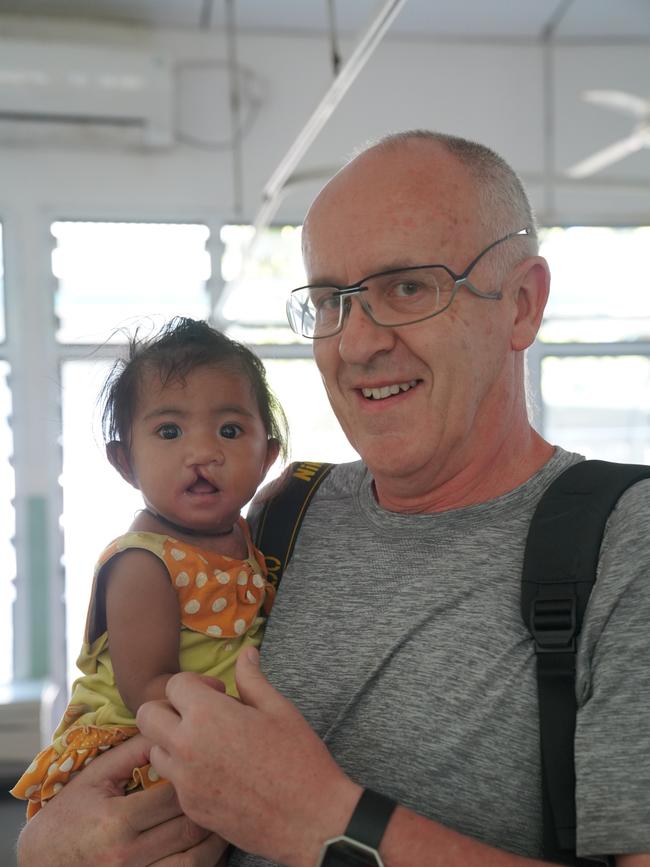
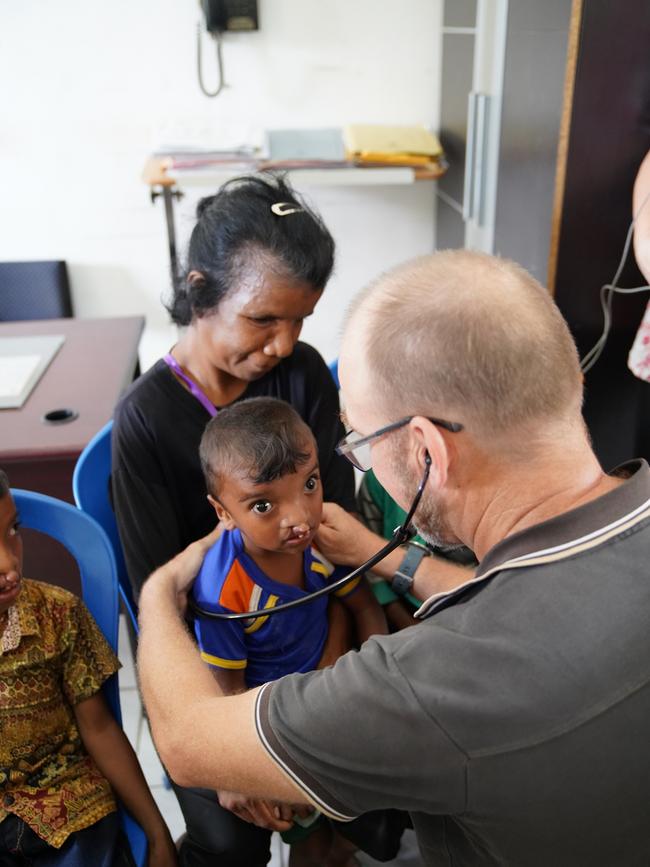
One patient who arrived was aged 12 but lived nearby — he was encouraged to go by his teacher who heard the surgeons would be in town, but the team lamented he had not come to previous clinics.
“Just as we were about to finish on the first day assessing patients the three worst clefts in the world came through the door, siblings so that’s a bit unusual,” Dr Moore recalls.
“The hardest bit is deciding which ones you do, which ones you don’t do. Which ones you think you can leave for your local counterpart, the young guy we’ve been training.
“When those three came in and the lists were full it was a case of, ‘oh my god’ — they had come on a bus for four to six hours, and had walked for three or four hours to get to the point where they get on the bus, and their clefts were the worst of the worst.”
The severity of the clefts, as well as the effort by the family to get there on the right day to seek help, of course made it a clear cut decision, and they were added to the surgery list.
As well as the surgery and training, the holistic team approach includes an emphasis on follow up visits, speech pathology as clefts can cause speech difficulties, even a dental clinic spin-off.
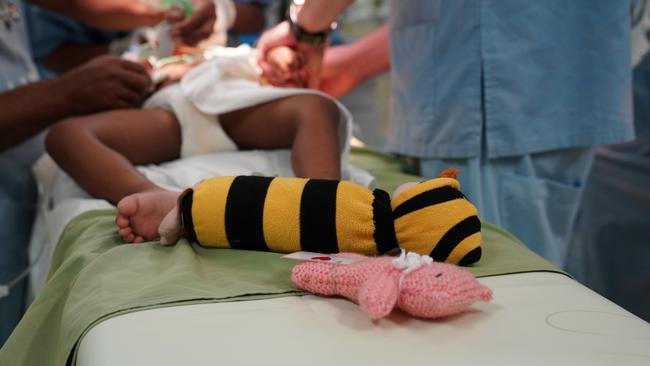
Dr Gill welcomed the opportunity to work in East Timor.
“It’s incredible to see the disparity in healthcare services between ourselves and one of our near neighbours - from our easy accessibility to all healthcare, to a region where even basic treatments, health professionals and resources are sparse,” he said.
“The relatively straight forward surgical procedures of cleft surgery can have life changing impact.
“To see patients present as social outcasts riddled with doubt and no self confidence then progress to integral members of the community filled with hope and a future full of opportunity is rewarding beyond description.
“And to be able to work with Mark and the OSSAA team focussing on education and developing a sustainable, independent service by local healthcare professionals makes this truly special to be a part of.”
A trip like this has its own measure of joy, such as seeing the results of previous surgeries by thankful people who just drop by to say hello, once word is out the Aussies are in town.
Dr Moore notes Dr Hargrave — now retired and living in Tasmania — is still revered in East Timor.
“Our work was based on the shoulders of the work that he had done and the trust that he had engendered in the region,” Dr Moore said.
While the long term goal is to train up local doctors in East Timor to a point the Australians are no longer needed, there is a big world out there and plenty more work to do.
Dr Moore heads to West Timor yet again next month for another clinic. With no fuss, no fanfare.
EAST TIMOR: THE FACTS
■ The Democratic Republic of Timor-Leste — known to most Australians simply as East Timor — comprises the eastern half of the island of Timor, the islands of Atauro and Jaco, and the enclave of Oecusse on the northwestern side of the island surrounded by Indonesian West Timor.
■ At just over 15,000 sq km it is about three times the size of Kangaroo Island, with a population of about 1.1 million, predominately Roman Catholic. The distance from Darwin to the capital, Dili, is about 720km.
■ The island was colonised by Portugal in the 16th century, and on November 28, 1975, the Revolutionary Front for an independent East Timor (Fretilin) declared independence but it was invaded and occupied by the Indonesian military on December 7, 1975.
■ Five Australian, New Zealand and British journalists based in the town of Balibo covering the expected invasion were killed by Indonesian special forces on October 16, 1975. They were unarmed, in civilian clothing, and had painted an Australian flag and the word AUSTRALIA on a building to identify themselves as non-combatants.
■ In 1999 the East Timorse voted in a referendum for independence from Indonesia, prompting violence in which 1400 civilians are believed to have been killed. Australian tropps led an international peace-keeping force to end the violence
■ East Timor became a sovereign state on May 20, 2002, with official languages of Portuguese and Tetum as well as 15 recognised local languages.



